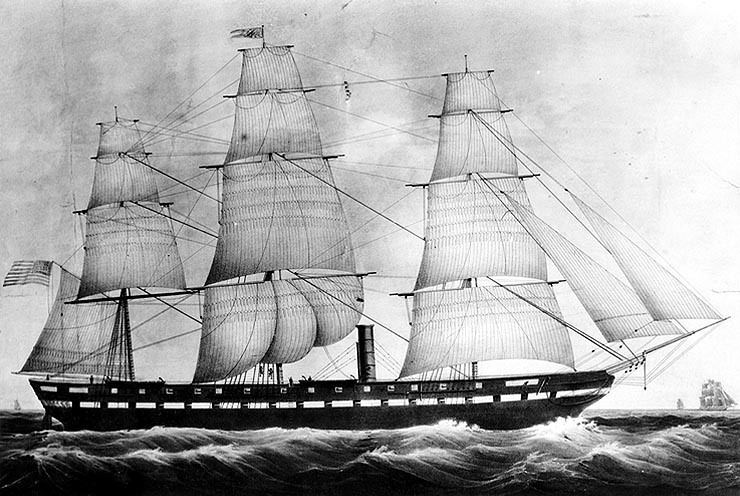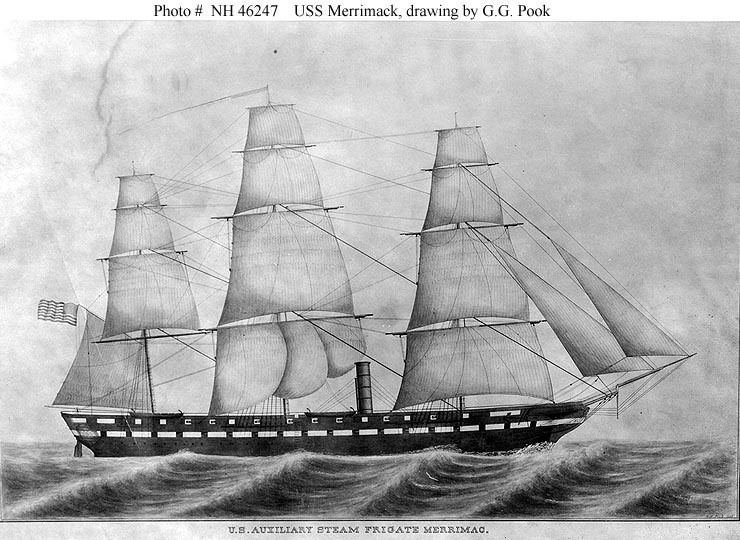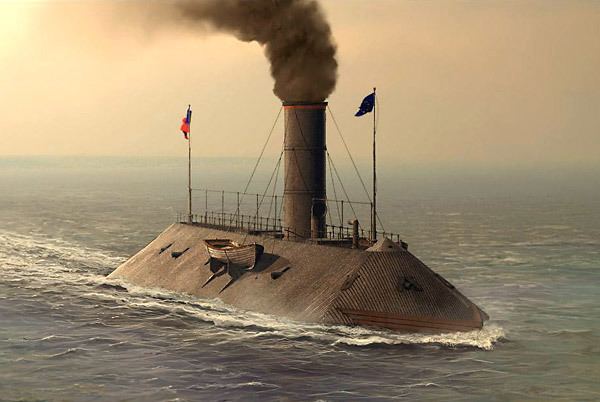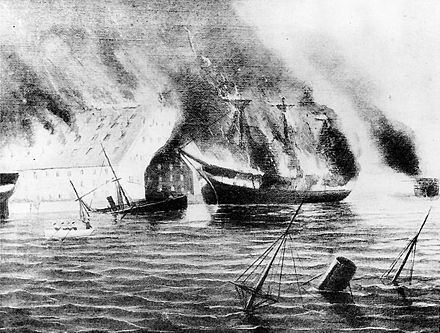Commissioned 20 February 1856 Tonnage 3,200 Length 84 m | Ordered 6 April 1854 Decommissioned 16 February 1860 Launched 15 June 1855 Beam 12 m | |
 | ||
Fate Burned and sunk in dock, 20 April 1861Raised and converted into ironclad CSS Virginia | ||
USS Merrimack, also improperly Merrimac, was a frigate, best known as the hull upon which the ironclad warship CSS Virginia was constructed during the American Civil War. The CSS Virginia then took part in the Battle of Hampton Roads (also known as "the Battle of the Monitor and the Merrimack") in the first engagement between ironclad warships.

Merrimack was the first of six screw frigates (frigates with steam power and propeller, "screw") begun in 1854. Like others of her class (Wabash, Roanoke, Niagara, Minnesota and Colorado), she was named after the eponymous river. In Massachusetts, the Merrimack River flows through the town of Merrimac, often considered an older spelling which has sometimes caused confusion of the name.

History

Merrimack was launched by the Boston Navy Yard 15 June 1855; sponsored by Miss Mary E. Simmons; and commissioned 20 February 1856, Captain Garrett J. Pendergrast in command. She was the second ship of the Navy to be named for the Merrimack River.

Shakedown took the new screw frigate to the Caribbean and to Western Europe. Merrimack visited Southampton, Brest, Lisbon, and Toulon before returning to Boston and decommissioning 22 April 1857 for repairs. Recommissioning 1 September 1857, Merrimack got underway from Boston Harbor 17 October as flagship for the Pacific Squadron. She rounded Cape Horn and cruised the Pacific coast of South and Central America until heading for home 14 November 1859. Upon returning to Norfolk, she decommissioned 16 February 1860.

Merrimack was still in ordinary during the crisis preceding Lincoln's inauguration. Soon after becoming Secretary of the Navy, Gideon Welles took action to prepare the frigate for sea, planning to move her to Philadelphia. The day before the firing on Fort Sumter, Welles directed that "great vigilance be exercised in guarding and protecting" Norfolk Navy Yard and her ships. On the afternoon of 17 April 1861, the day Virginia seceded, Engineer in Chief B. F. Isherwood managed to get the frigate's engines lit off; but the previous night secessionists had sunk light boats in the channel between Craney Island and Sewell's Point, blocking Merrimack. On the 20 April, before evacuating the Navy Yard, the U.S. Navy burned Merrimack to the waterline and sank her to preclude capture.

The Confederacy, in desperate need of ships, raised Merrimack and rebuilt her as an ironclad ram, according to a design prepared by Lt. John Mercer Brooke, CSN. Commissioned as CSS Virginia 17 February 1862, the ironclad was the hope of the Confederacy to destroy the wooden ships in Hampton Roads, and to end the Union blockade which had already seriously impeded the Confederate war effort.
